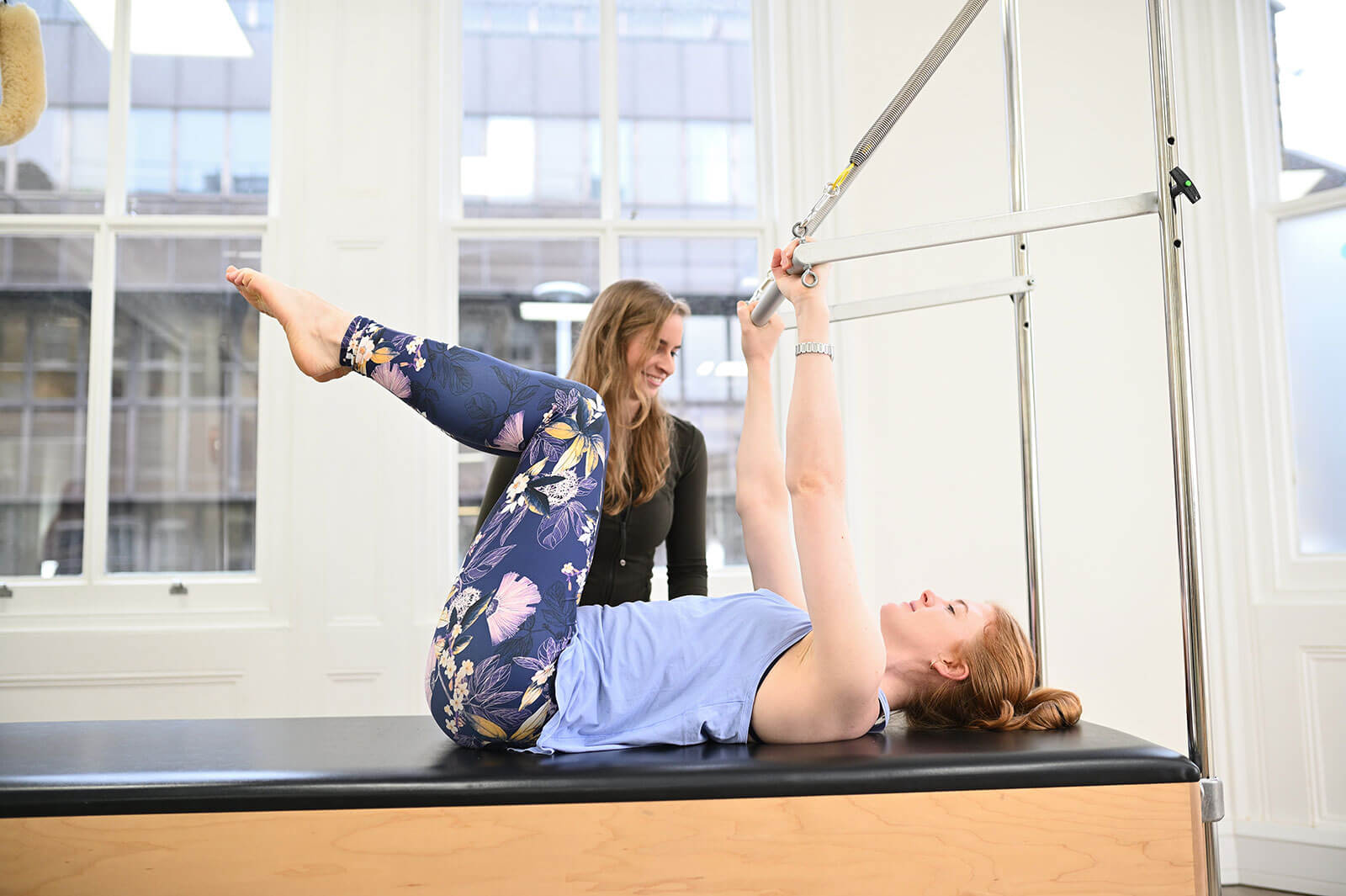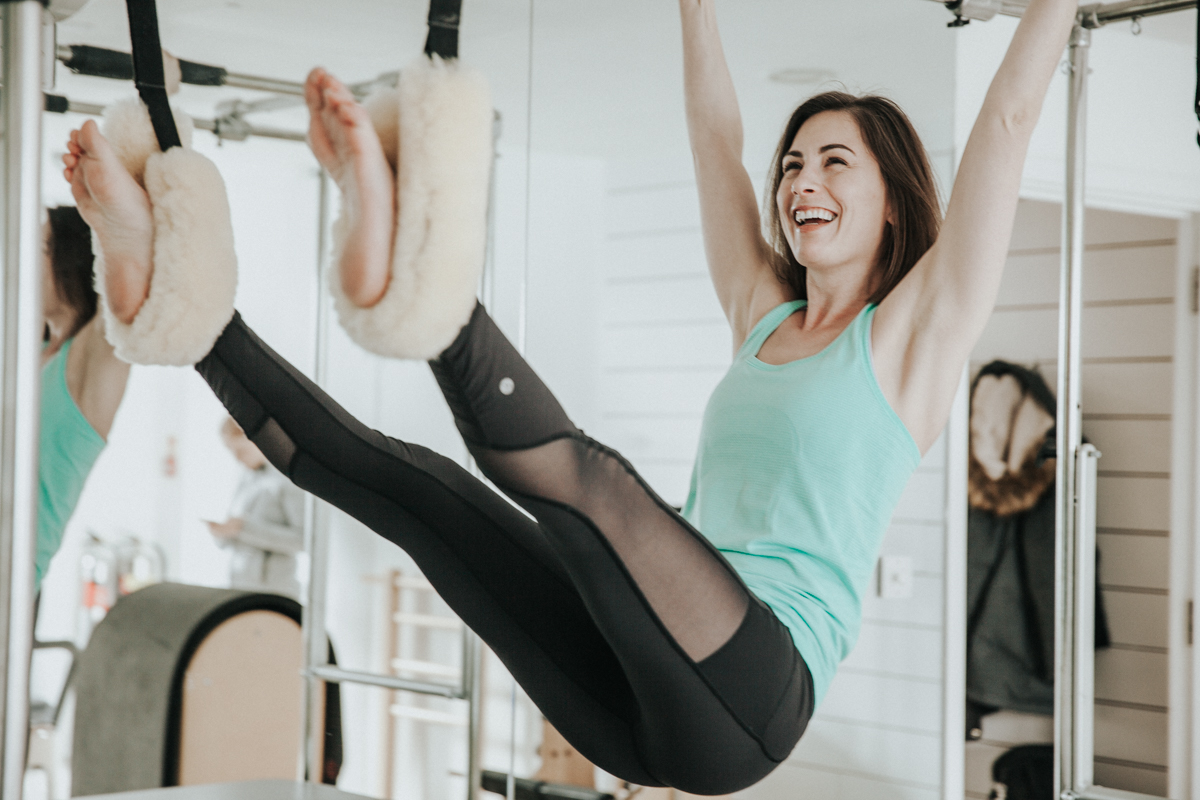Are you wondering how to become a Pilates instructor? Maybe you want to become a reformer, or equipment Pilates instructor?
In this blog we are going to walk you through the steps to become a Pilates instructor, not just in the UK but abroad as well. We will look at how much it can cost to become a Pilates instructor as well as how much you can earn, where you can work and the skills that you need.
If you are reading this blog, it is likely you have done Pilates before and are looking for a career change to become a Pilates instructor. However, in case that’s not you and you want to keep all your options open, let’s begin by discussing what Pilates is.
Pilates is a type of exercise which helps people to change their movement and improve their strength. It typically focuses on the neuromuscular, or control, side of movement. Over time Pilates has adapted and evolved creating a variety of types of Pilates that form a hybrid between the gym and Pilates.
Pilates is suitable for pretty much anyone, whether they are pre or post surgery, pregnant or have just given birth, have illnesses or injuries or are fit and healthy! Equipment Pilates in particular can be modified to help all these people.
As a Pilates instructor, you’ll be responsible for using either the mat or Pilates equipment to help, or resist, people’s movement. Your job is to create change in people so that they can improve their posture, strength, mobility, rehabilitate from injury or illness and improve body awareness, to name just a few.
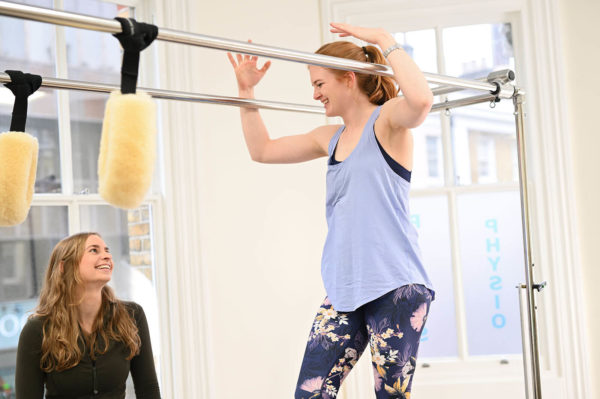
Qualities of a Pilates instructor
If you’re wondering whether you have the right qualities, attributes and traits to become a Pilates instructor, there are a few key things which will set you apart from others and set you up for a successful career as a Pilates instructor.
Typical qualities of a Pilates instructor include:
- Be interested in Pilates!
- Be passionate about the human body
- Be inquisitive about how movement happens
- Have a willingness to continue to learn
- Have a desire to develop a strong knowledge of anatomy, biomechanics and posture
- Be able to learn how to critically reason between movements
- Be active yourself (it is quite a physical job!)
- Be willing to talk to lots of different people
- Be able to create relationships with clients quickly
- Be friendly and positive
- Be able to motivate people
- Have good communication skills in both groups and in a 1-1 setting
- Be willing to start early and/or finish late!
- Be open to learning new business skills especially how to sell!
- Have patience and empathy
- Be able to listen and not just talk
- Be flexible in your approach, not one size fits all and you can’t always plan!
- Have good observation skills
- Are organised
- Have confidence but know when to ask for help!
What qualifications do you need to become a Pilates instructor?
In the UK there is no governing body for Pilates so you can pretty much do any in house qualification and say you teach Pilates…
However, if you are looking for longevity, to do it properly, and travel with this skill, the type of qualification you do is key to becoming a successful Pilates instructor.
It is a good idea to look at courses which are recognised by Pilates Method Alliance (PMA). This means that the course has been externally validated and shown to include everything you need from science to holistic qualities! These Pilates courses also change as research develops so teaching will often vary from year to year. With this in mind, rest assured when completing a course recognised by the PMA, you’re being taught using the most recent knowledge of the body and biomechanics.
Despite these courses being longer and often more expensive than others, they usually give you time between finishing the course and sitting your exams so you’re able to develop experience whilst under supervision.
Time to dedicate to your training and learning is key. It is not just about learning a few exercises quickly and being able to say a few cues which you have copied from someone else.
It is about understanding the principles of movement, the science behind it and knowing how you can help people to move, even if they are in pain or have no idea what they are doing!
Please remember that everyone, even medical professionals, have a scope of practice. This means that you may not be able to see every client, even after you have completed a “special population” training to become a Pilates instructor. Ensuring that you surround yourself with those that have more experience will help you grow and learn in order to be able to see a wider range of clients.
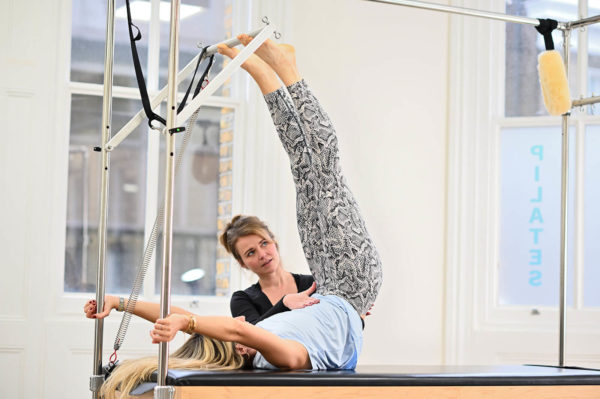
If you want to work with physiotherapists or in a clinical environment, it is even more important to make sure the course you choose includes all of these.
Pilates courses with Polestar
If you’re looking to become a Pilates instructor, we highly recommend a Pilates course with Polestar.
The Polestar Comprehensive Pilates course is a 6 month course which covers all the different types of Pilates equipment. It is run over 6 weekends, generally one per month and allows you up to 18 months after finishing the course to sit your exams.
The exams are a 5 part exam and include:
- a multiple choice theory exam
- a given case study which you must reason through, identify contraindications and precautions and then create a programme design for that client as a beginner, intermediate and advanced participant
- the ability to demonstrate 20 advanced exercises from the repertoire. You do not know what these exercises will be until you walk into the room
- the ability to assess and teach someone you have never met before in a 1:1 setting
- the ability to teach a beginner and advanced mat exercise in a group setting. You do not know these exercises until you walk into the room
There is also the potential for an interview at the end to determine your critical reasoning. This means that you need to not only know the exercises, you need to understand them in depth. This is why time is key.
Prior to sitting the exam, you need to also fill in a logbook which looks at self-directed study, some short essays and reading assignments, observation time and practice teaching time.
We know this sounds like a lot but you will learn so much on this journey!
Polestar is based around science and will help you to problem solve your way through different patients.
You will delve into conscious movement versus blind, or unconscious movement. It is so important to move consciously, not only in terms of becoming a Pilates instructor but also in the way we move and carry out our daily life. Conscious movement helps us develop neuromuscular pathways which mean we know where our joints actually are. This is how you create carry over for your clients from your sessions into posture and other movements.
You will also look at tactile cueing, what this is, how to use it and different types of tactile touch. You will go through different types of imagery, movement science, psychology, bioenergetics, pathology and how you can integrate movement as well as break it down.
Starting a Pilates teacher training course: expectations vs the reality
Ruth Smith, Physio, mat Pilates teacher and business manager at Complete Pilates, shares her experience of starting the Polestar Comprehensive studio equipment course.
“I came into the first weekend of my Polestar Comprehensive course at Moss Pilates with mixed feelings on what to expect and how the weekend was going to go.
Having taught mat work Pilates for 10 years with training from APPI (another Pilates school) and 15 years of experience of being a musculoskeletal Physiotherapist, I was excited to learn more about the equipment side of Pilates.
I had heard from my Polestar-trained colleagues at Complete Pilates that the course would be more than I could imagine. They said it would be so much more than just exercise content. And they were absolutely right.
The first weekend is described as being focused on basic postural assessments and learning a selection of basic exercises on all pieces of Pilates equipment.
We did cover all of this, but the theme of learning for me was far more around the Polestar vision. This is quoted in their principles of movement manual as being: ‘To impact the world through intelligent movement, fostering awareness of self and community’.”

How to prepare for starting a Pilates training course
1. Do the pre-reading
Doing the assigned reading puts you in a much stronger learning position and enables you to get the maximum out of the Pilates instructor course. With courses like Polestar, there is so much given to you before the course with online videos and reading recommendations. It’s all there for you to take advantage of – so use it!
2. If you are not currently getting to class, get booked in
Book yourself in with an instructor from the same Pilates school. This will help to get you in the mind-set of that style of teaching and to prepare your body!
3. Bring layers of clothes
Moving between sitting, listening, practising exercises and practising teaching means you get hot then cold then hot again! Layers can help you keep your temperature in check.
4. Take a water bottle
Keep hydrated – you’ll need it to keep your brain and body alert!
5. Prepare your food
If there are no good food outlets nearby, make sure you bring a healthy, energy-packed lunch (plus snacks). These courses involve long hours and can be mentally and physically taxing. To last, you’ll need to fuel-up!
What you’ll do as a Pilates instructor
This really depends on the type of Pilates you want to teach and where you want to teach it!
At Complete Pilates we work in a clinical environment and work predominantly with 1:1 clients. Our typical day consists of:
- assessing and re-assessing clients
- designing a programme which helps them achieve their wider goal
- adapt to each client’s learning style in order for them to get the most out of each movement
- adapt programmes to account for any problems which they have walked in with on the day!
- guide movements and correct technique
- demonstrate movements if this is how your clients learn
- educate clients on how movements fit into day to day life
- evaluate whether a member of the wider multidisciplinary team may be able to help the client progress further
- writing notes on sessions which analyse what went well, or not so well, and creating plans to move forwards
- communicating with other clinical Pilates instructors, physiotherapists, doctors and consultants regarding the clients
If you work more in the fitness industry you will be expected to:
- take multiple group classes
- provide general cues to serve a larger group
- direct safe and effective classes for clients with no injuries
- add weights where necessary
Pilates instructor salary
How much a Pilates instructor earns depends on your set up and your level of experience.
If you work for yourself, you will need to understand marketing in order to attract clients. In this setting, it is also really important to understand your scope of practice and who you should be seeing, or who you may need to pass on to someone with more experience and understanding.
Often studio’s or gyms will pay between £15-40 per hour for clients. This can be more if you are teaching larger group classes. If you are paid per client, you are generally self-employed which means you do not get paid for hours that you do not work, and your hours are subject to change. In this setting, you will have to do less marketing as the company will find the clients for you.
At Complete Pilates, we offer a salary option which gives stability. This ranges from £25,000-£50,000 depending on experience. We also offer a bonus on top as well as assistance with professional development.
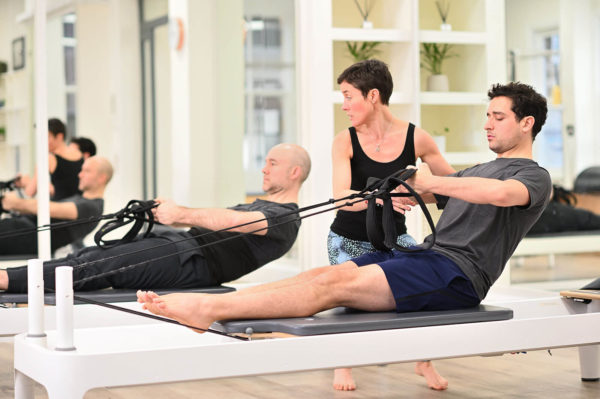
Still want to become a Pilates instructor?
Amazing!
A career in Pilates is both rewarding and never dull! Science is always progressing so if you like to learn this is a great career choice.
The work place options are also endless. From larger group classes in a fitness setting, to 1:1 Pilates helping people recover from injury and pain, Pilates can fit the bill. The important thing to remember is what do you know, and how can you progress!
If you are interested in how to become a Pilates instructor, please get in touch and ask any questions that you like. We are here to help both our profession, and you, find the type of Pilates best for you!
These blogs are designed to give information to everyone, however, it is important to remember that everyone is different! If you have not seen one of our therapists and have any questions about injuries, what you have read or whether this may be useful to you, please just ask. We are more than happy to help anyone and point you in the right direction. Our biggest belief is that education is key. The more you understand about your injury, illness and movement, the more you are likely to improve.


